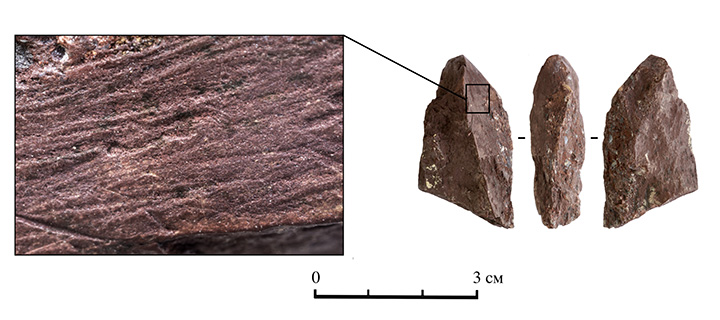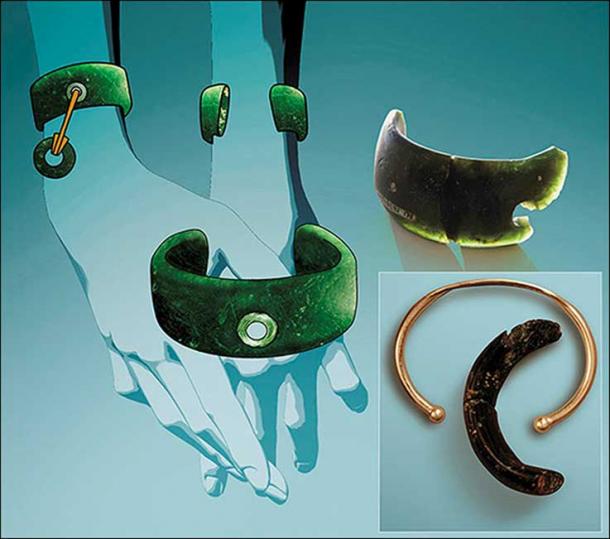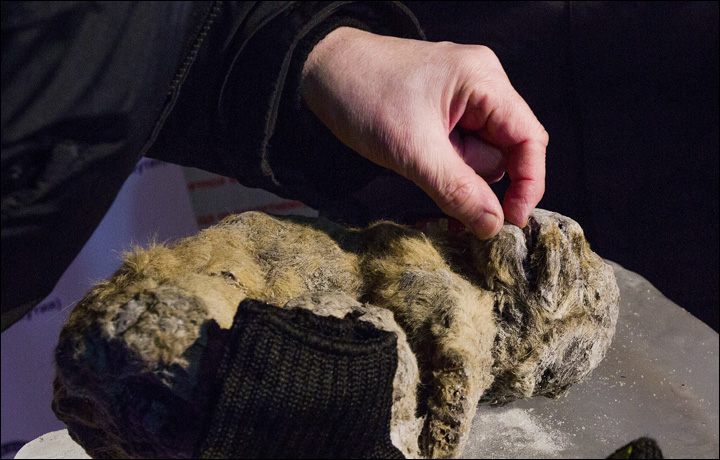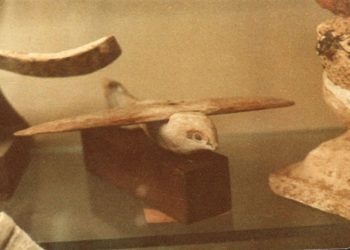Siberia spans a massive geographical region encompassing parts of Eurasia and North Asia. This territory extends from the Ural Mountains to the watershed dividing the Pacific and Arctic drainage basins. Home to harsh and unforgiving winters where temperatures in January average around −25 °C, Siberia is so massive that it accounts for as much as 77% of Russia’s land area. Siberia is also home to Lake Baikal, the largest freshwater lake by volume in the world, containing 22–23% of the world’s fresh surface water.
Discoveries in Siberia
It is precisely within this massive, mysterious region that archeologists have discovered some of the most fascinating archeological finds in the history of mankind. In this article, we look at some of the most fascinating finds experts have made while exploring the numerous subregions of Siberia. Here are some of the most incredible discoveries made in Siberia.
50,000-year-old pencil
One of the most interesting discoveries made in Siberia was made in a cave. The Denisova Cave is one of the most amazing archaeological sites in Siberia, if not in Russia as well. Hidden away in the Altai mountains, the Denisova Cave is of great paleoarchaeological and paleontological interest. There, archeologists have discovered numerous bone fragments of the Denisova hominin throughout the years and artifacts dated to around 40,000 BP. Archeologists also discovered evidence of a long-extinct horse species that lived in the region around 32,000 years ago. But among the numerous discoveries made inside the cave, the discovery of a 50,000-year-old pencil is among the top discoveries.

Made of hematite, an ancient human species living inside the cave crafted various ‘crayons,’ which they then used to create some of the first artwork in the Altai Mountains. Experts revealed that Homo sapiens did not craft the pencil, but a more ancient species called the Denisovans considered a long-lost branch of ancient humans.
50,000-year-old Tiara
Made of Woolly Mammoth bone fragments, the ancient human ancestors, the Denisovans, crafted around 50,000 years ago an intricate Tiara worn by the ancient species.

According to researchers, the Tiara discovered inside the Denisova cave is now the oldest tiara discovered anywhere in the world. The archeological piece was discovered in the summer of 2018 by Russian archeologists who say the item was most likely worn by a male and not a female.
70,000-year-old bracelet
Also discovered inside the Denisova cave, archeologists recovered one of the oldest and most impressive bracelets ever discovered on the Earth’s surface. Believed to have also been crafted by the ancient Denisova species, scientific analysis has revolutionized our understanding of this archaic human species which is believed to have crafted the bracelet around 70,000 years ago.

The bracelet is so old that experts argue it is the oldest piece of jewelry worldwide. Furthermore, jewelry originated long before humans were believed to have had the necessary skills to craft such objects. Professor Mikhail Shunkov from the Institute of Archaeology and ethnography in Novosibirsk revealed that the ancient bracelet was ‘a world-level phenomenon’ since its sole existence challenges the known ‘level of technologies’ in the distant past.
A 50,000-year-old needle
Also believed to have been crafted b the ancient Denisovan species and discovered inside the famous Denisova Cave, experts made a ‘sensational’ discovery in 2016 when they reported discovering an intricate needle. At seven centimeters, the ancient tool was thought to have been used by Denisovans to craft clothes. The needle is reportedly crafted from an animal bone ( an unknown, large bird), the oldest needle we’ve ever found.
The discovery of the needle and a plethora of other items from inside the cave point to the fact that the ancient Denisovan species was much more sophisticated than what we’ve been crediting them. According to Russian scientists, the 50,000-year-old Denisova needle rewrites history since the oldest such object dates to some 40,000 years ago.
Another striking find: The 40,000-year-old head of a giant wolf
Although not discovered inside the Denisova cave, the discovery of a massive, prehistoric wolf’s severed head quickly made headlines worldwide. According to the Siberian Times, the discovery of the massive 40,000-year-old head marks the first discovery of its kind anywhere in the world.
The specimen is extremely well preserved, and scientists say its fur, fangs, skin, and brain tissue remain nearly intact. How the head was severed remains a mystery. Although the massive head of the 40,000-year-old wolf was discovered in 2018, the discovery was kept a secret for a year and only recently revealed to the general public. Scientists revealed the importance of the find, saying that it was a unique specimen of the first remains of a fully developed Pleistocene wolf with its preserved tissue.
Liquid blood inside a 42,000-year-old foal
Talk about sensational; the Siberian permafrost helped preserve the ‘oldest blood in the world,’ as experts find liquid blood inside a 42,000-year-old extinct foal.
“Samples of liquid blood were taken from heart vessels – it was preserved in the liquid state for 42,000 years thanks to favorable burial conditions and permafrost,” revealed Semyon Grigoryev, head of the Mammoth Museum in Yakutsk.
Discoveries in Siberia: 55,000-year-old extinct lion cubs

The Siberian permafrost is ideal for helping preserve extinct animal species. The lion cubs discovered in 2015, which were previously dated at 12,00 years old, are much older than that. Experts say that two of the lion cubs, one excellently preserved, are between 25,000 and 55,000 years old, making them the oldest extinct lion cubs in Siberia. Experts say that the lions were between one and two weeks old when they were killed after a prehistoric ceiling collapsed.
Have something to add? Visit Curiosmos on Facebook. Join the discussion in our mobile Telegram group.











